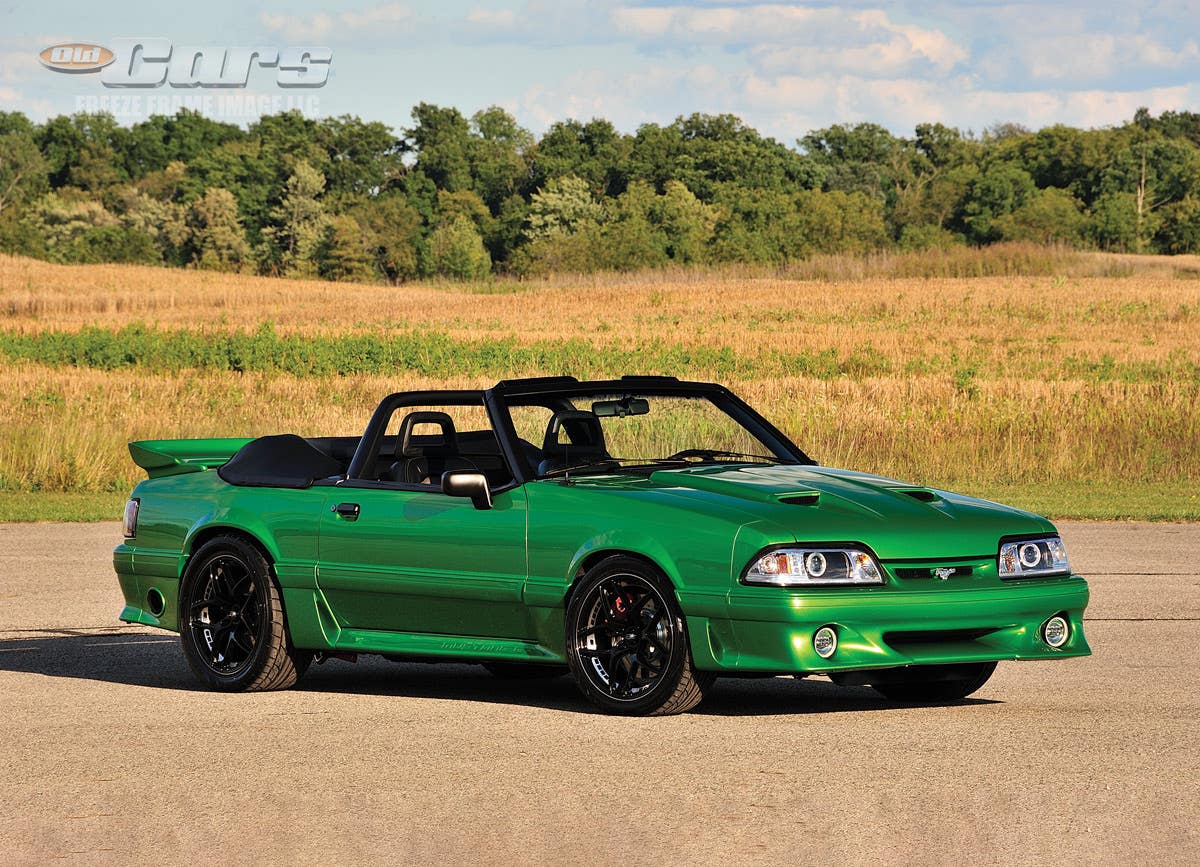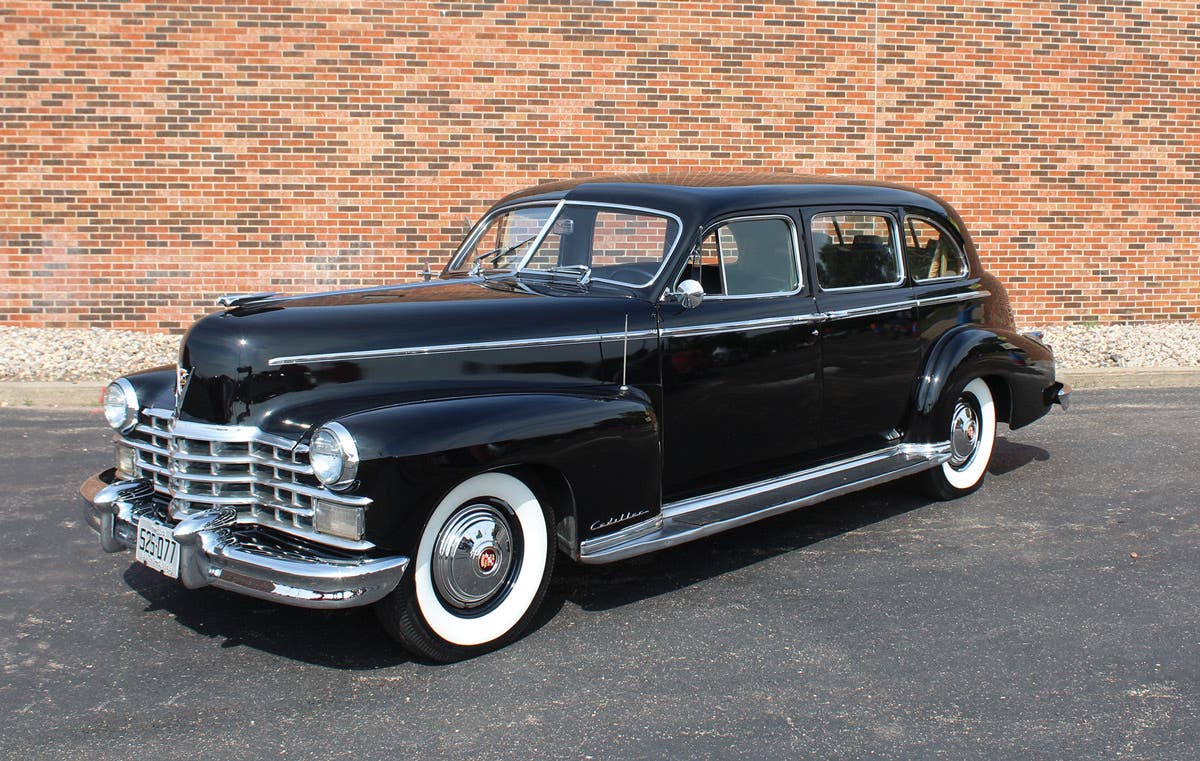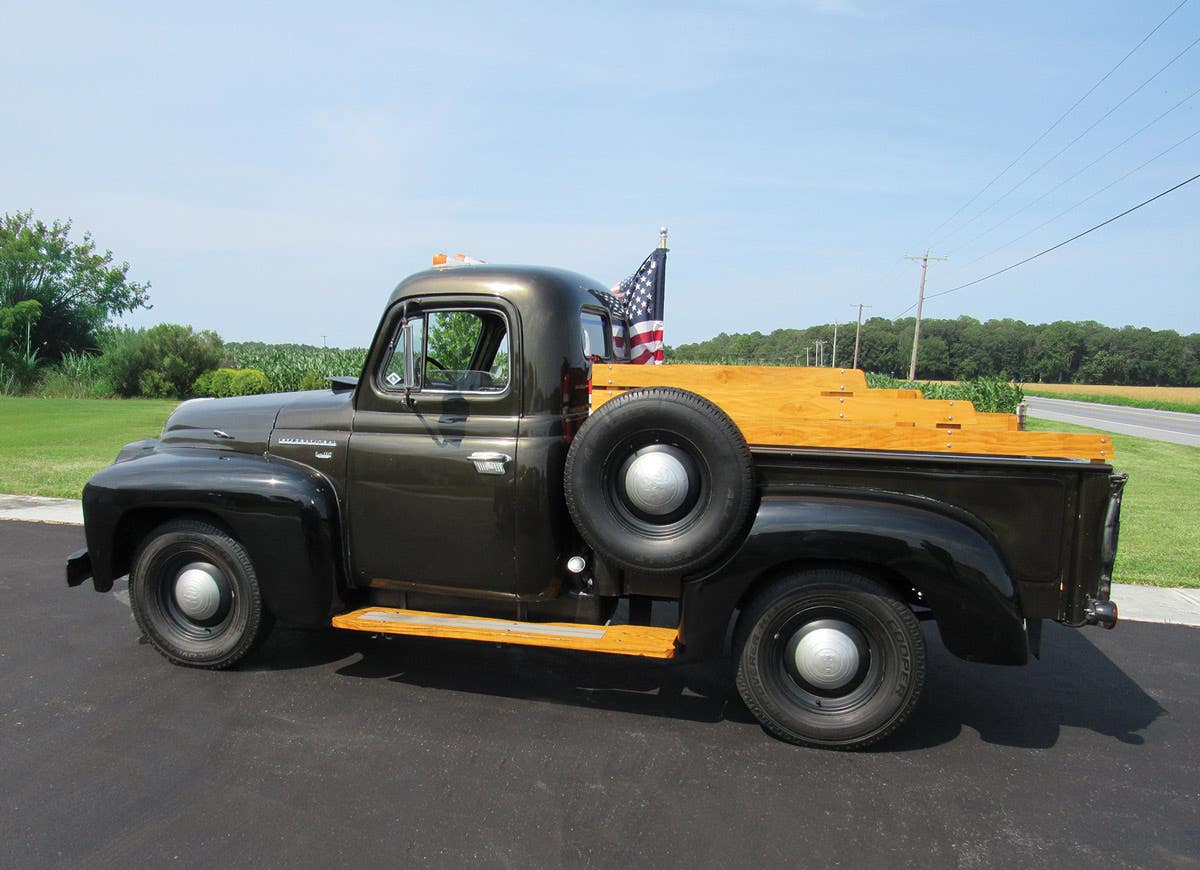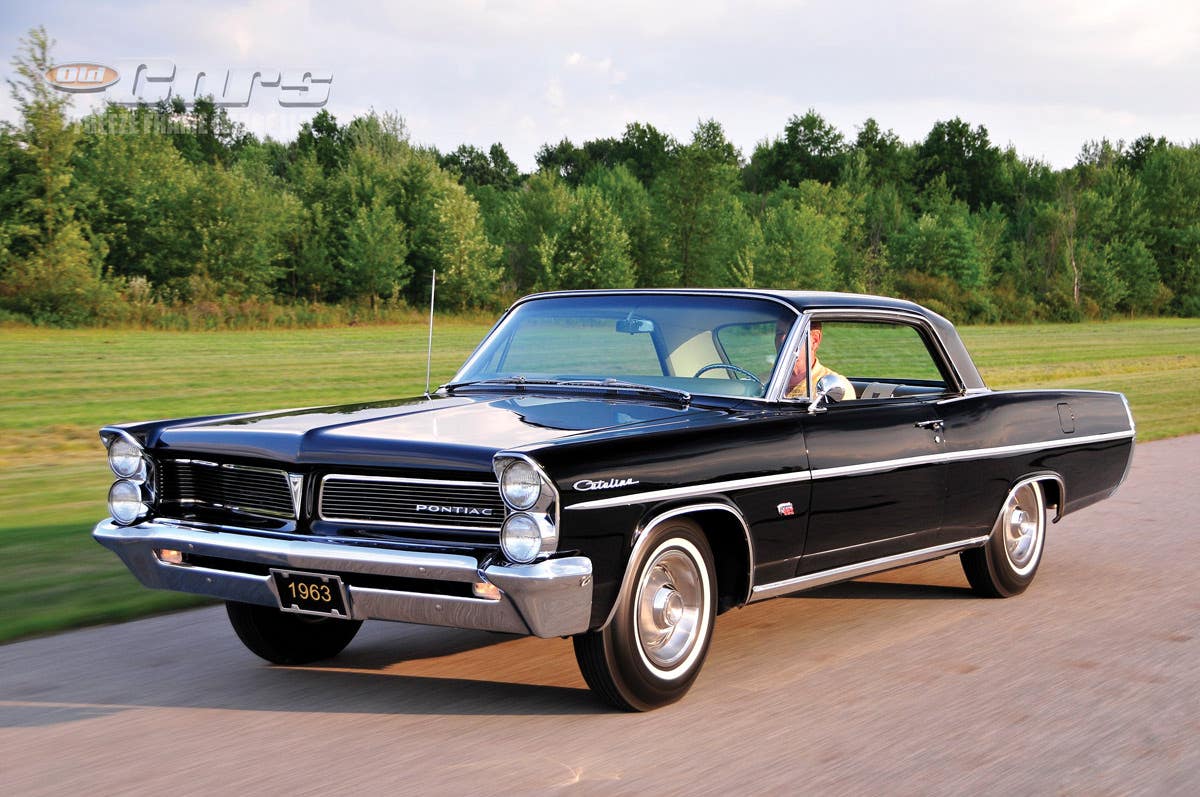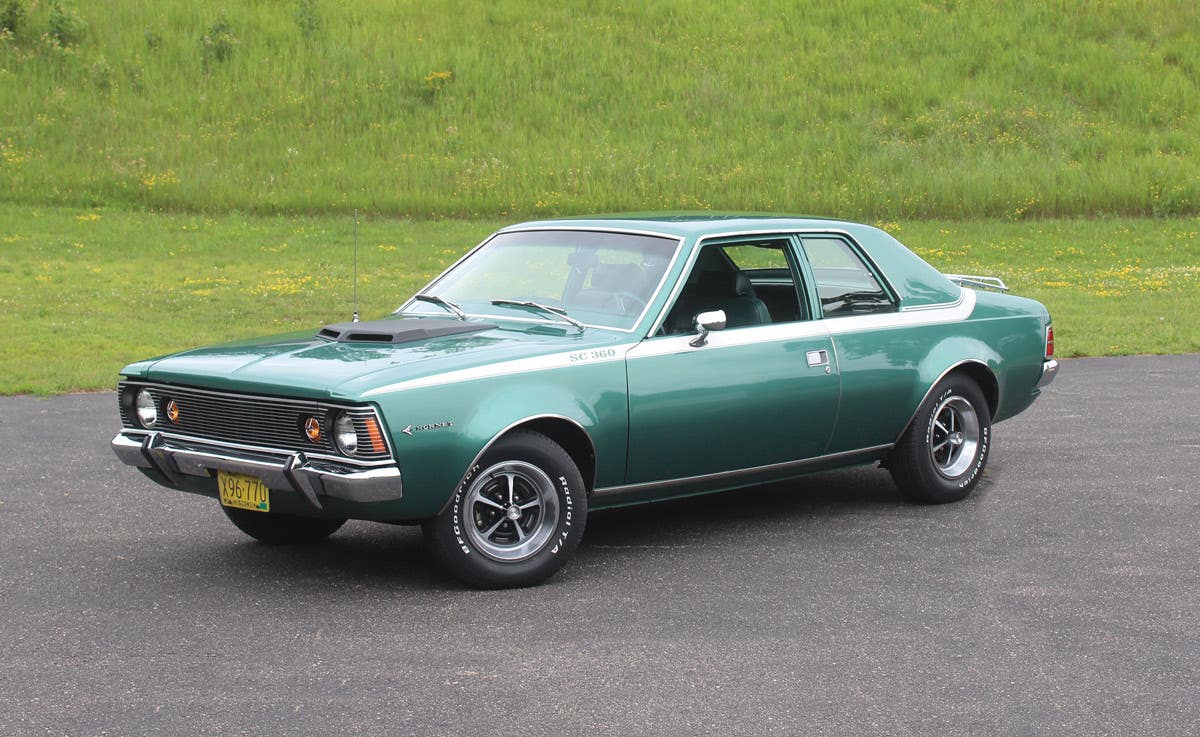Car of the Week: 1938 Packard Twelve
Daniel Wentz had a comprehensive vision for his 1938 Packard, and he went into great detail specifying what he wanted.
By Dave Mitchell
One of my favorite movies is “The Philadelphia Story” with Cary Grant, Jimmy Stewart and Katherine Hepburn, and a Packard convertible. Grant’s character “C. K. Dexter Haven” helps Hepburn’s character Tracy Lord (his ex-wife) do anything possible to avoid scandal at the hands of reporter Stewart (Macaulay Connor) and his boss, the evil tabloid publisher. The main characters are from very wealthy, “old money” Philadelphia families; even the potential groom in Lord’s upcoming second marriage is looked down upon as an outsider because he is “new money.” The very idea of commoners getting a glimpse into their lives is horrifying and they cold shoulder the reporter Connor as the lowest of the low. Connor foolishly thinks he has a chance with Lord, but finally realizes he is doomed — the rich and poor don’t mix.
As a Midwesterner, I never thought of why the movie was called “The Philadelphia Story” rather than being set in the wealthy borough of some other city, but as I learned more, it makes perfect sense. There seems to be a long held tenet that the wealthy in Philadelphia strive to be left alone. One may live in a mansion, and be the man in charge at the office, but when he is mixing with “everyday people,” he finds it best if no one knows he has money; he doesn’t dress to show off and he doesn’t drive a car that is flashy. The goal is to have nice things, but not to call attention. Just like Tracy Lord, the wealthy don’t want any undue attention focused on them. If you were one of the lucky ones who had money during the sad days of the Depression, you didn’t want to paint a target on your back with your car.
For this reason, a particular style of car came to be: the “Philadelphia car.” These cars were usually painted black or very dark colors, were fitted with blackwall tires, had some or all of the chrome removed or painted and had logos and emblems removed or painted over. In general, they were understated and rather reserved, and even blacked out to the point of being eccentric and almost sinister. Status was downplayed and there was to be no free advertising of the brand of the car. This even affected the mainstream designs of the luxury automakers; on the very exclusive 1934-1937 Cadillac V-16 models, the Cadillac name can be found nowhere on the outside of the car.
Daniel Bertsch Wentz Jr. of Rydal, Pa., was an executive of the Stonega Coke and Coal Co. and a member of the elite North Philadelphia Family (Wentz, Bertsch, and Leisenring) that controlled extensive coal mining operations in Pennsylvania and West Virginia from the 1860s to the 1960s. In short, he was old money high society and he could afford any car, even in hard times. In 1937 and 1938, the United States was in a recession following the depression, yet Packard had restyled its entire senior line to attract more buyers. Daniel Wentz saw one of the new Packards just after they came out and liked them, but he had his own vision. He went to his local coachbuilder, with whom he had worked before, and discussed his ideas with Enos Derham, owner of Derham Custom Body Corp. of Rosemont, Pa. He asked Enos to design a special convertible victoria on the new Packard Twelve chassis.
We know the rest of the story from the 26 pages of letters and documents from the Derham files. By Nov. 16, 1937, only two months after the 16th series was introduced, Wentz had the design, authorized building it and already had a chassis number assigned. The design retained the Packard front fenders and hood, running boards and rear fenders with modifications. From the cowl back, the body was completely different. The windshield was built with multiple bronze castings with a delicate chrome frame for the glass only, and was raked and veed more than the standard factory Packard windshield, making it lower and sportier.
Indeed, from the cowl back, his convertible bore no resemblance to the cataloged Packard convertible victoria. The entire body was aluminum skin over ash structural wood, and the body lines were formed into the aluminum, not separate pieces. In fact, the rear tub of the car was formed in one piece of aluminum, including the continuous beltline. The doors alone were amazingly designed and built with multiple compound curves from front to back and top to bottom. The beltline tapered through the length of the 4-foot doors, and the upper line, which dropped dramatically from the windshield to the rear quarter made the windshield look even lower. These curves and drops gave the car a sleek and sporty look unlike that of any production cars from 1938.
Derham straightened the front edge of the doors where Packard had curved them, then curved the lower edge and angled the rear edge forward to break up the side of the car with an attractive curve that accentuated the slope of the rear deck. Overall, the design of the doors was very complex and extremely well thought out and executed both in function and in style; the more you look at the doors, the more you appreciate them. This is one of the features that sets this car as a one-off Full Custom body apart from production cars. This intense level of craftsmanship simply couldn’t be achieved within the corporate cost restrictions.
The design utilized the Packard long-wheelbase chassis which allowed a full and comfortable rear seat with plenty of leg room with enough room for a long, sloping rear deck treatment that was quite striking. The other very unusual feature of the design was that of the top and windows. The door windows had no vent windows and the sides were angled to match the rake of the windshield in front and the quarter windows in the rear. Having quarter windows at all was a departure from Packard four-passenger convertibles and made sitting in the rear seat much more pleasant. With the windows down, the car looked longer, lower and much sportier.
Another special feature of the body was the top, which folded completely flush with the rear seat and body to give the car a low sleek look with the top and windows down that was almost unmatched among late Classic-era open cars. We know that Wentz gave a lot of thought to the top, even down to the material: Haartz 5000 tan. He was concerned about durability and Enos Derham told him that Haartz black material would hold up better, but after much deliberation, and Derham even bringing samples to Wentz’s house, the nod went to tan as we can see in a letter from Derham “as [you] stated before unquestionably the tan material is the sportier looking.”
All of this attention to detail produced a pretty racy car for a Philadelphia coal empire scion who wanted to be low key. But Wentz had a comprehensive vision for this car, and he went into great detail specifying what he wanted. He began with the colors: black fenders and a dark maroon body, and to emphasize the body lines, black from the beltline up. He looked carefully at the design and the standard trim and then cleaned and simplified it to let the design speak for itself. He removed the chrome trim from the headlamps, painted all of the chrome trim on the hood and front clip except the plain ornament, hood center trim and the front louver on each side of the hood and the radiator shutters. Even the Trippe lamps had painted shells. He shortened the running board trim so that it didn’t extend onto the front fenders and painted the gas cap black (he didn’t want anything to distract from the purity of the design). The tires were black and the trim rings were deleted with only stripes on the wheels as well as the beltline. The trim was removed from the sidemount covers also. Not only was the Packard Twelve emblem removed from the trunk rack, the panel it bolted to was also removed.
Inside, the many flutes on the black-painted instrument panel were ground off and the only chrome left were the rings around the instruments. The front seats were special bucket-type units and the rear was full-width with a folding center armrest, all done in black leather. The carpets were maroon with a black leather binding.
The resulting car was not the typical “Philadelphia car.” Yes, it was toned down and more subtle, but it was much more. It was not just a blacked-out eccentric car. It was dramatic, sporty and yet still elegant. Wentz’ vision as brought forth by Derham is well thought out and thorough to produce a very clean design that was long and low, powerful and masculine. It combined the quiet power of the Packard Twelve chassis, refined in its final configuration with independent front suspension, big power brakes and loads of reliable power and torque with a light open body to create a sports car that smolders with the reserved, almost sinister look of a panther ready to pounce.
Lest we look at this exotic sporting Derham Packard and think of scion Wentz driving it to his country club (top down) or to the opera (top up), or the back seat full of smiling kids racing on the way to the summer cottage at Eagles Mere. Wentz would also have driven this car to his office at the Fidelity Philadelphia Trust Building, or to one of the coal mines in West Virginia, so he would not have wanted to make waves that were too big. Only he and Enos Derham would know that this car cost just about double that of a standard Packard Twelve. Consider the note of appreciation that he sent to Enos Derham when he drove his car for the first time in September 1938:
“I called you yesterday to tell you how perfectly delighted I was in every way with the new body which you have just completed for me. I cannot say enough for the general appearance of the job and I would like to take this opportunity of expressing to you my sincere appreciation for the personal interest which you took in the work as well as for the remarkably high class workmanship.
“I would like to request, however, that you consider this letter as entirely personal and will not use it in any way as an advertisement of your work for as I explained to you, this is one of my personal practices as well as a practice that has been in force for a great many years in our organization. I will, of course, be only too glad to help you in any way I can, either by talking personally or writing to anyone who is interested in having you do work and you may rest assured, I will give you the best possible reference. I will be only too glad as you know, to help you in any way I can to get more business.”
The document illustrates how guarded Wentz was, even though he obviously liked Derham and the car, and it shows how private and low key the Philadelphia elite really were. Lucky for us, Wentz and Derham had a comprehensive vision for a great car and the means to execute it. Essentially thanks to their special insight, they were able to get around the constraints of the typical “old ladies” Philadelphia car and carefully design a very expensive and special, one-of-a-kind exotic sports car that was restrained enough to be driven by a Philadelphia scion, but remains very elegant to this day.
{This special Packard was recently restored by Dave Mitchell of David Mitchell Restorations, 603 Hanford Drive, Geneseo, IL 61265. (packard12s@hotmail.com).}
______________________
Show us your wheels!
If you’ve got an old car you love, we want to hear about it. Email us at oldcars@aimmedia.com
______________



